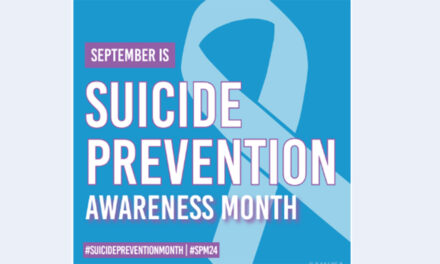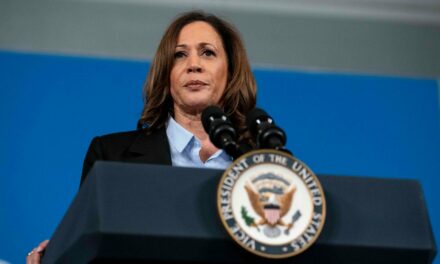We support our Publishers and Content Creators. You can view this story on their website by CLICKING HERE.
How the mighty have fallen!
Former New York Gov. Andrew Cuomo won a coveted Emmy Award in 2020 in recognition of his daily televised briefings on COVID-19.
Cuomo’s allegedly successful response to the deadly pandemic made him a Democratic national hero, and, of course, a darling of the liberal media.
Cuomo’s media glory ended one year later, however, amid charges of sexual harassment and impeachment threats, and the International Academy of Television Arts and Sciences withdrew his Emmy.
Today, thanks to a recent hearing conducted by the House Select Subcommittee on the Coronavirus Pandemic, Americans have learned more about Cuomo’s “Emmy-winning” response to New York’s COVID-19 crisis.
Notwithstanding the previous media adulation for his televised briefings as governor, the record shows that Cuomo’s pandemic response increased New Yorkers’ mortality rates, particularly among nursing home residents.
Responding to Rep. Kweisi Mfume, D-Md., during the House subcommittee’s tense Sept. 10 inquiry, Cuomo urged the panel to “forget about the politics [and] look at the facts” and insisted that “New Yorkers follow the science.”
Well. Let’s look at those facts.
Nursing homes. Cuomo issued a directive March 25, 2020, mandating that his state’s nursing homes accept patients recovering from COVID-19.
The directive’s language was unequivocal: “No resident shall be denied re-admission or admission to the nursing home solely based on a confirmed or suspected diagnosis of COVID-19. Nursing homes are prohibited from requiring a hospitalized resident, who is deemed medically stable, to be tested for COVID-19 before admission or readmission.”
Cuomo claimed his policy was grounded in scientific evidence and adhered to federal public health guidelines. In fact, however, the language directly contradicted recommended practices at the time, which included testing all patients before admission to a nursing home to prevent potential outbreaks of COVID-19.
Rep. Richard McCormick, R-Ga., an emergency physician, highlighted this contradiction and challenged Cuomo’s directive.
“If you prohibit the testing of a patient, you don’t know what you’re dealing with,” McCormick said, “so it’s a dishonest argument to begin with.”
In his congressional testimony, Cuomo argued that the “law” took precedence over the “advisory,” claiming that guidelines from both the Centers for Disease Control and Prevention and the Centers for Medicare & Medicaid Services held legal authority, not his directive.
The former governor testified that his nursing home policy was merely advisory, not mandatory.
The problem, however, was that Cuomo’s directive used clear, authoritative language, including terms such as “shall” and “prohibited,” plainly declaring itself to be mandatory. As Rep. Brad Wenstrup, R-Ohio, chairman of the subcommittee, pointed out to Cuomo, his statewide advisory “referred to itself as a directive in the very first paragraph, with your name at the top.”
Federal assistance. Next is the issue of Cuomo’s response to federal assistance on COVID-19. Then-President Donald Trump deployed the USNS Comfort, a state-of-the-art hospital ship, with a capacity of approximately 1,000 beds and several operating rooms.
Trump sent the ship to New York to alleviate the expected pressure on the state’s health care system to cope with an expected explosion of COVID-19 cases.
Less than a month later, Cuomo decided not to take advantage of the ship and its ample resources. He acknowledged the Trump administration’s logistical support but deemed it unnecessary, stating at the time: “It did give us comfort, but we don’t need it anymore.”
By April 21, 2020, despite crowded New York City hospitals, the USNS Comfort had received only 178 patients.
Meanwhile, throughout 2020, the Trump administration focused heavily and successfully on the rapid and unprecedented development of COVID-19 vaccines through the initiative dubbed Operation Warp Speed.
However, a key weakness in the federal response was the Trump administration’s failure to pursue a similar effort for rapid development and distribution of therapeutics for treating the novel coronavirus that caused COVID-19, including the use of preexisting antivirals.
Therapeutics dispute. During the Sept. 10 subcommittee hearing, the issue resurfaced when Rep. Jamie Raskin, D-Md., claimed that the use of hydroxychloroquine as well as ivermectin—a medication available well before the pharmaceutical company Pfizer Inc.’s development of its Paxlovid brand—had been scientifically debunked.
Growing evidence now supports chloroquine, a drug similar to hydroxychloroquine (also called HCQ) in structure and effects, as effective against COVID-19 if properly prescribed. Dr. David Gortler, a senior fellow at The Heritage Foundation and former Federal Drug Administration official, has noted that HCQ is safe when used correctly—a fact the FDA itself has confirmed.
Despite the CDC’s acknowledgment in 2017 that hydroxychloroquine is relatively well-tolerated, the drug became controversial during the politically charged atmosphere of the deadly COVID-19 pandemic.
The House subcommittee’s inquiry, like previous hearings on the federal government’s COVID-19 response, provided important insights. Although Congress has examined the role of federal agencies, it also should assess how other state governments, which received significant federal aid, managed the pandemic.
The New York case is a prime example. Cuomo’s notorious nursing home directive of March 25, 2020, continues to be widely scrutinized. It contributed to a preventable tragedy and had devastating consequences for at least 4,000 families.
Members of the House Subcommittee on the Coronavirus Pandemic have already have amassed an impressive record of vital information, including sworn testimony from top federal officials on major issues related to government’s responses to the pandemic.
That body of work can be of enormous benefit to the next presidential administration in reforming and improving the performance of America’s major public health agencies.
Their work, however, is far from finished.

 Conservative
Conservative  Search
Search Trending
Trending Current News
Current News 





